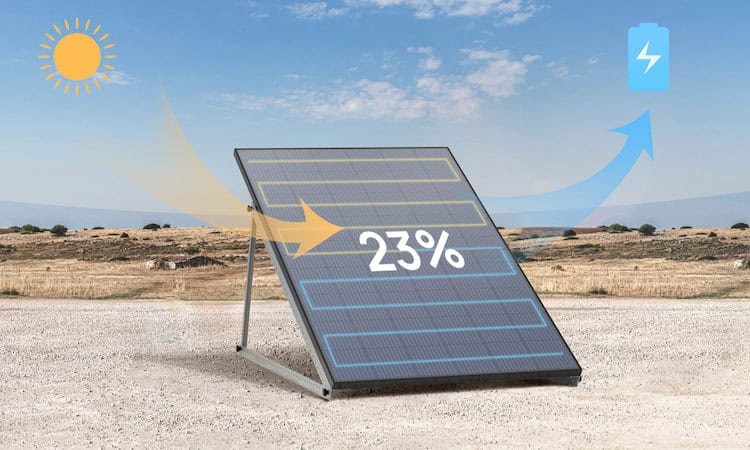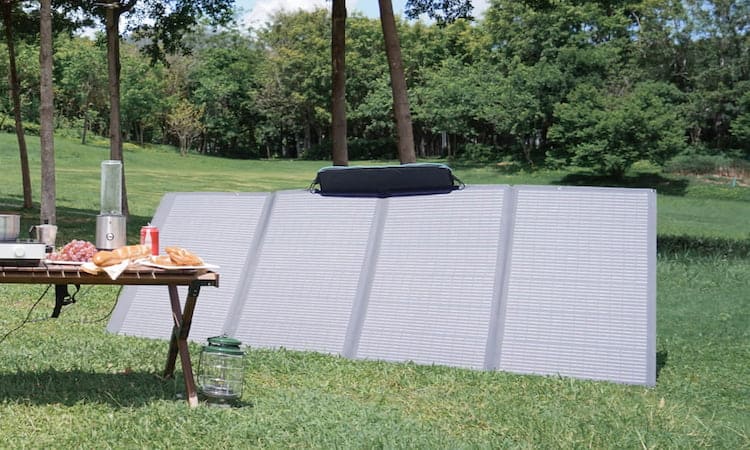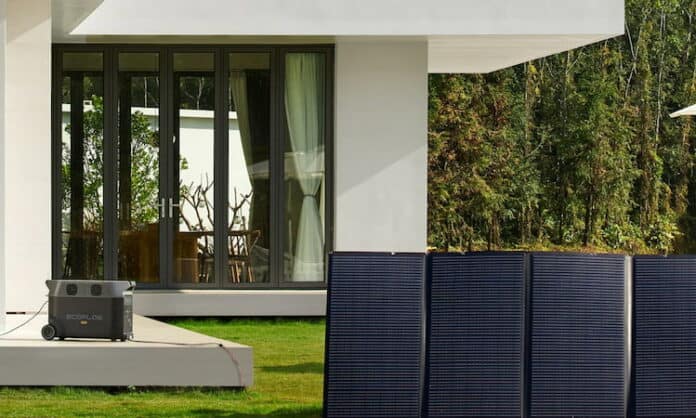Thinking about going solar? With our sunny days, ongoing load shedding, and rising electricity costs, more people are turning to solar panel systems to save money and help the environment. You’ve probably heard that they work by absorbing sunlight, but how does this process actually happen? And how do you use them to power your home?
In this guide, we’ll answer the question “How do solar panels work?”, breaking down the science behind solar panels, how they generate energy, and the factors that can affect their performance. By the end, you’ll have a better understanding of how solar power could be the game-changer you’re looking for.
What Is Solar Energy?
Solar energy is energy that comes from the sun. It’s the most abundant and renewable energy source we have, and it’s available every day, all around the world. Essentially, solar energy harnesses the power of sunlight and turns it into usable electricity or heat.
In South Africa, we’re lucky to have an ideal climate for solar power. With plenty of sunny days throughout the year, solar energy is a natural fit for many homes and businesses. By capturing sunlight through solar panels, we can generate clean, sustainable electricity without relying on traditional sources like coal or gas.
But how does solar produce energy, exactly? We’ll give a more detailed explanation below.
How Does Solar Energy Work: Photovoltaic Effect Explained
At the heart of “How does solar power work?” is something called the photovoltaic effect. It sounds complex, but it’s really just the process that allows solar panels to convert sunlight into electricity. Here’s how it works:
1. Solar Cells and Silicon: The Building Blocks
Solar panels are made up of many smaller units called solar cells, typically made from silicon, a semiconductor material that’s great at absorbing sunlight. Each solar cell has two layers of silicon: one that is positively charged (p-type silicon) and one that is negatively charged (n-type silicon). These two layers create an electric field at their junction, which is crucial for generating electricity.
2. Photons and Electrons: The Energy Transfer
When sunlight hits a solar cell, it’s made up of tiny particles of light called photons. These photons contain energy, and when they strike the surface of the silicon in the solar cell, they knock electrons loose from their atoms. This is the core of the photovoltaic effect—the energy from the photons excites the electrons, causing them to move.
3. Creating an Electric Current
Once the electrons are knocked loose, the electric field created by the two layers of silicon pushes these electrons in a specific direction. This movement of electrons creates an electric current, which is the flow of electricity.
However, a single solar cell doesn’t generate a significant amount of electricity on its own. So, multiple solar cells are connected together within a solar panel to increase the overall power output.

4. Converting and Using the Electricity
The electricity generated by the solar panels is in the form of direct current (DC), where the electrons flow in one direction. However, most homes and appliances use alternating current (AC), where the direction of the flow of electrons alternates.
To convert the DC electricity into AC, a device called an inverter is used. The inverter changes the electrical current so it can be used to power your lights, appliances, and electronics.
Now, you might wonder – do solar panels work at night? The answer is no, unfortunately. Solar panels need sunlight to produce electricity, so when the sun goes down, they stop working. Although you can always store the energy generated during the day in batteries for use at night.
Factors That Affect Solar Panel Efficiency
Several factors can affect solar panel efficiency, that is, how well your solar panels turn sunlight into electricity. Here are the major ones:
Sunlight Angle and Intensity
Solar panels love direct sunlight. The closer the sun is to hitting them at a 90-degree angle, the more energy they produce. In South Africa, this means positioning panels to face north and adjusting their tilt to match your latitude.
For example, in Johannesburg (around 26°S), angling panels at ~26 degrees maximises year-round efficiency.
Panel Quality and Technology
Not all solar panels are created equal. The quality of the panels, as well as the technology they use, plays a significant role in how efficiently they convert sunlight into electricity. There are different types of solar panels—monocrystalline, polycrystalline, and thin-film—with varying levels of efficiency.
- Monocrystalline panels tend to be the most efficient, with an average efficiency of around 18-22% or more. They’re made from a single silicon crystal, which makes them more expensive but highly effective.
- Polycrystalline panels are typically a bit less efficient, at around 15-18%, but are more affordable.
- Thin-film panels are lighter and flexible but generally less efficient, with efficiencies ranging from 10-12%.
Choosing the right type of panel for your needs and budget is key. In addition to the type of panel, the brand and manufacturing quality can also impact efficiency. Well-made, high-quality panels will perform better and last longer, offering greater overall value over time.
The EcoFlow 400W Portable Solar Panel is a great example of advanced technology in a compact and portable design. This panel boasts an impressive up to 23% conversion rate, making it one of the more efficient options on the market. With multi-layered, durable materials, it is built to withstand the elements while providing reliable performance.
Its adjustable angle ensures you can maximize sunlight exposure, and the IP68 waterproof rating guarantees that the panel will perform even in harsh weather conditions. Plus, its one-piece folding design makes it easy to transport and set up wherever you need it.

Temperature
Wait, heat isn’t always good? Surprisingly, solar panels work best in cool, sunny conditions. High temperatures (like our scorching summer days) can reduce efficiency because excess heat slows electron movement. Choosing the best solar panels with a low temperature coefficient and ensuring proper airflow around them can help mitigate some of the impact of extreme temperatures.
Shading and Obstructions
Anything that blocks the sunlight from reaching your solar panels—such as trees, nearby buildings, or chimney—will affect the energy output of your system. Even partial shading on a single panel can impact the performance of the entire array, as most solar panels are wired in series, meaning that a shaded panel can reduce the energy produced by others connected to it.
Dirt and Dust
Living in an area with a lot of dust or dirt can impact the efficiency of your solar panels. If dust, debris, or bird droppings accumulate on the surface of the panels, it can block sunlight from reaching the cells, reducing their ability to generate electricity. This is especially a concern in drier, dustier regions like Karoo or areas prone to strong winds.
Maintenance and Age of Panels
Over time, your solar panels will experience a gradual decrease in efficiency due to wear and tear. While modern panels are built to last for 25 years or more, they do experience a slight drop in energy output each year—usually around 0.5% to 1% annually.
How Is Solar Energy Used to Power Your Home?
Now that you understand the basics, let’s dive into exactly how solar panels work for your home. Here’s how it all comes together to power your daily life:
Solar Panel System Components
To begin with, a typical solar system is made up of several key components that work together to harness, convert, and store the sun’s energy:
- Solar Panels: These are the primary components that collect sunlight and convert it into direct current (DC) electricity through the photovoltaic effect.
- Inverter: The inverter is crucial for converting the DC electricity generated by the panels into alternating current (AC) electricity, which is what your home uses to power appliances, lights, and electronics.
- Battery Storage (Optional): If you have a battery storage system, any excess electricity generated during the day is stored for use when the sun isn’t shining, such as at night or on cloudy days.
- Electric Meter: This measures the amount of electricity your solar system produces and uses. If you’re on a grid-tied system, it can also track any excess energy you send back to the grid.
How Solar Energy Powers Your Home: The Process
Once your solar system is installed, here’s how it works to power your home:
- Daytime: When the sun is shining, your solar panels absorb sunlight and convert it into DC electricity. The inverter then changes that DC electricity into AC electricity, which is used to power everything in your home—lights, appliances, air conditioning, and more.
- Excess Energy: If your solar panels are generating more electricity than your home is consuming, the excess energy can be either stored in batteries or sent back to the grid (if you have a grid-tied system). In a grid-tied system, you may even earn credits for the surplus electricity you send back, helping offset the cost of your system.
- Nighttime or Cloudy Days: When the sun sets or during cloudy days, your solar panels stop producing electricity. If you have a battery storage system, it will provide power from the stored energy to keep your home running. Alternatively, if your system is connected to the grid, you’ll use electricity from the utility grid until your panels begin producing power again the next day.
Self-Consumption and Net Metering
One of the advantages of solar energy is self-consumption. With a solar system, you have more control over your electricity supply. By using the electricity generated by your panels directly, you reduce your reliance on the grid and lower your monthly electricity costs.
If your system is connected to the grid, net metering can help maximize your savings. This allows you to send excess energy back to the grid in exchange for credits, which can be used to offset the cost of the electricity you draw from the grid when your panels aren’t producing. In South Africa, net metering systems are becoming more popular, making solar energy even more economical for homeowners.
Conclusion
To wrap it up, the simple answer to how do solar panels work is this – they absorb sunlight and convert it into electricity via the Photovoltaic Effect. Several factors, from their type and technology to the installation angle, shading, or temperature can all influence the efficiency of a solar panel system. That said, with the right system in place, solar energy can help you cut down on your electricity bills significantly while contributing to a cleaner, greener future. And with South Africa’s great weather, there’s no better time to make the switch to solar!
FAQs
Do solar panels work in winter?
Solar panels work in winter, but they generate less energy due to shorter daylight hours and a lower sun angle. So, yes, they can still produce power in snow or cold temperatures.
Can solar panels generate electricity on cloudy days?
Solar panels can generate electricity on cloudy days but at a reduced output. They typically produce about 10-25% of their normal capacity. The exact amount depends on cloud density and panel efficiency.
How long does it take for solar panels to generate electricity?
Solar panels start generating electricity instantly when exposed to sunlight. However, their efficiency depends on the light intensity. The lower the light, the lesser the energy output. But as long as they receive sunlight, they continuously produce electricity.
